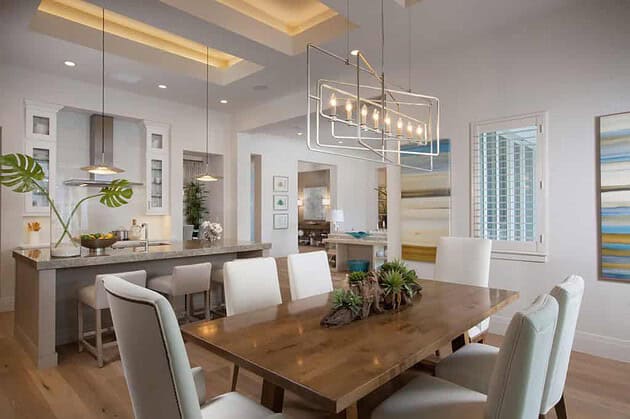Interior lighting can make or break a space. Too dark, and a room may feel unwelcoming, but too bright and it may seem open but ultimately overwhelming – and the balance varies depending on the room. In a living room, for example, auxiliary lighting may highlight an area, help with a task like reading, or make it more comfortable to chat and watch TV, without a lot of glare. When selling a property, though, lighting plays a different role.
Photographing property for a real estate listing can be challenging, but it’s important since most people form their initial opinions about a property based on photos shared online. Luckily, if you follow these 5 rules, you’ll be poised to come away with photographs that highlight your home’s best features.

Work With The Pros
Photographing your home for a real estate listing is not a DIY project, even in the midst of a pandemic. That means, if it’s at all avoidable, you should avoid taking the pictures yourself. Instead, ask your real estate agent about taking your listing photographs. Many offer photography as a property management service and will stage your home. They may bring their own lighting or move around your existing lights. Many only take photos at certain times of day because of how important natural light is.
Speaking Of Daylight
Daylight is important to great interior photography, so if you have the ability to open the curtains and let the sunshine in, that can make your space look much more welcoming. In comparison, overhead lighting or recessed lighting often looks like a spotlight when photographed. The goal should be to light the space such that the light is evenly distributed throughout the room.
A Matter Of Scale
Daylight may dominate as the preferred way to light full rooms, but if you’re trying to highlight a specific architectural element, you’ll want to choose more targeted lighting and simply capture everything. As top real estate photographers will tell you, on shoot day, they take pictures of everything in the home. If it looks interesting, take a picture. And if it doesn’t look interesting? Take a picture anyway. You might find, in the editing process, that your home’s molding or an old doorknob are actually beautiful – it’s just hidden in the details.
Artificial Options
What are you supposed to do about lighting a room if it doesn’t have windows or if those windows don’t provide adequate lighting? This is a problem in many urban environments, where the main windows might simply face the wall of another building. If that’s the case in your apartment, then your stager may want to use some kind of artificial spotlight.
Artificial spotlights are generally placed at an angle to the room in order to avoid making the space look flat. Remember, these photos will be potential buyers’ first impression of the space, so you want to make the rooms look more open and dimensional.
Edit With Care
When a home’s interior lighting isn’t quite right, many stagers will use editing software to make the space look more appealing. Lightroom presets can set the stage, but be careful making tone modifications. Real estate photos look best when they tend toward neutral or warm colors, so once you’ve found your light balance, lean into the reds and oranges, not blues and greens.
Whether you’re photographing a detailed Victorian home or an open piece of modern architecture, lighting and editing are critical to presenting your home to potential buyers. Ideally, a professional will guide you through this process, but if you have to go it alone, now you know how.














